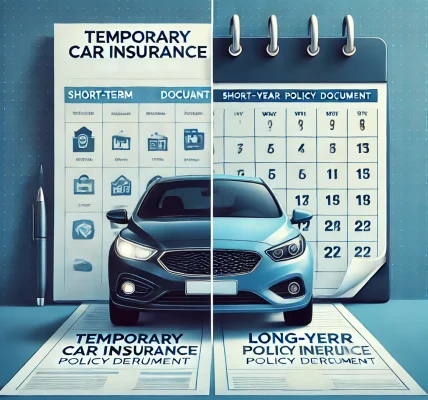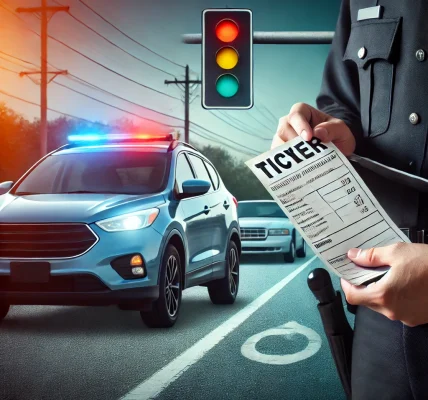Technology is reshaping the car insurance industry, with Artificial Intelligence (AI) and telematics playing a significant role in modern policies. These advancements have led to more accurate risk assessments, personalized premiums, and improved customer experiences.
In this article, we will explore how AI and telematics impact car insurance, their benefits for policyholders, and potential challenges associated with these technologies.
Understanding AI & Telematics in Car Insurance
What is AI in Car Insurance?
AI in car insurance involves using machine learning, data analytics, and automation to streamline processes such as risk assessment, claims processing, and fraud detection. It enables insurers to analyze vast amounts of data and make smarter, data-driven decisions.
What is Telematics?
Telematics refers to technology that collects and transmits real-time driving data using GPS, onboard sensors, and mobile applications. This data helps insurers evaluate driving behavior and determine insurance premiums based on actual risk rather than generalized factors.
How AI is Transforming Car Insurance
1. Personalized Premiums & Usage-Based Insurance (UBI)
Traditionally, insurance companies determined premiums based on broad factors like age, gender, and driving history. AI enables insurers to analyze individual driving behaviors and customize premiums accordingly. This approach, often combined with telematics, results in fairer pricing models.
2. Faster & More Efficient Claims Processing
AI-powered claims processing speeds up settlements by automating document verification, damage assessments, and fraud detection. AI-powered chatbots can also guide policyholders through claim submissions, reducing processing time from days to minutes.
3. Fraud Detection & Prevention
Insurance fraud costs the industry billions of dollars annually. AI algorithms can analyze claims data, detect suspicious patterns, and flag potentially fraudulent activities, reducing losses and ensuring legitimate claims are processed quickly.
4. Improved Customer Experience
AI-driven virtual assistants and chatbots enhance customer service by providing instant responses to queries, helping users compare policies, and guiding them through claims procedures, improving overall user experience.
5. Predictive Analytics for Risk Assessment
AI can analyze past claims data, driving behavior, and even weather patterns to predict the likelihood of future accidents, allowing insurers to adjust pricing and offer preventive solutions to high-risk drivers.
The Role of Telematics in Modern Car Insurance
1. Real-Time Driving Data for Better Risk Assessment
Telematics devices collect data on speed, braking patterns, acceleration, and location. Insurers use this information to determine how safely a driver operates their vehicle, resulting in fairer premium pricing.
2. Pay-As-You-Drive (PAYD) & Pay-How-You-Drive (PHYD) Insurance
Telematics enables usage-based insurance (UBI), where policyholders pay premiums based on actual mileage (PAYD) or driving behavior (PHYD). This approach benefits safe and infrequent drivers with lower insurance costs.
3. Immediate Crash Detection & Emergency Response
Advanced telematics systems can detect accidents in real-time and immediately alert emergency services, reducing response times and potentially saving lives.
4. Vehicle Tracking & Theft Recovery
Telematics allows insurers and law enforcement to track stolen vehicles, increasing recovery rates and reducing losses for both insurers and policyholders.
5. Encouraging Safer Driving Habits
Many insurers provide incentives, such as discounts or rewards, for policyholders who adopt safe driving habits based on telematics data, promoting road safety.
Challenges & Concerns of AI & Telematics in Car Insurance
1. Privacy & Data Security
One of the biggest concerns with AI and telematics is the collection of personal data. Policyholders worry about how their driving data is stored, shared, and used by insurers and third parties.
2. Potential for Algorithm Bias
AI models rely on historical data, which can sometimes lead to biased risk assessments. Insurers must ensure AI systems are transparent, fair, and free from discriminatory pricing.
3. Acceptance & Adaptation by Customers
Some drivers may resist telematics-based policies due to privacy concerns or a lack of trust in the technology. Educating customers about the benefits and security of these technologies is essential for widespread adoption.
4. Technical Issues & Errors
AI and telematics rely on accurate data collection. Any technical glitches, data transmission errors, or cybersecurity threats could impact assessments and claims processing.
Future of AI & Telematics in Car Insurance
The future of car insurance will be increasingly shaped by AI and telematics. We can expect:
- Wider Adoption of AI-Powered Claims Processing: With AI improving efficiency, more insurers will transition to automated claims handling.
- Greater Customization & Personalized Policies: Policies will become more tailored to individual driving habits and behaviors.
- Integration with Autonomous Vehicles: As self-driving cars become more common, insurers will use AI and telematics to assess liability and coverage models.
- Enhanced Safety Features & Predictive Risk Management: AI will continue to help predict and prevent accidents, making roads safer.
Conclusion
AI and telematics are transforming the car insurance industry, offering personalized premiums, efficient claims processing, and enhanced fraud detection. While these technologies present challenges, their benefits far outweigh the concerns when implemented responsibly.
As AI and telematics continue to evolve, policyholders can look forward to more transparent, fair, and cost-effective insurance options that prioritize safety and accuracy. 🚗💡📊



